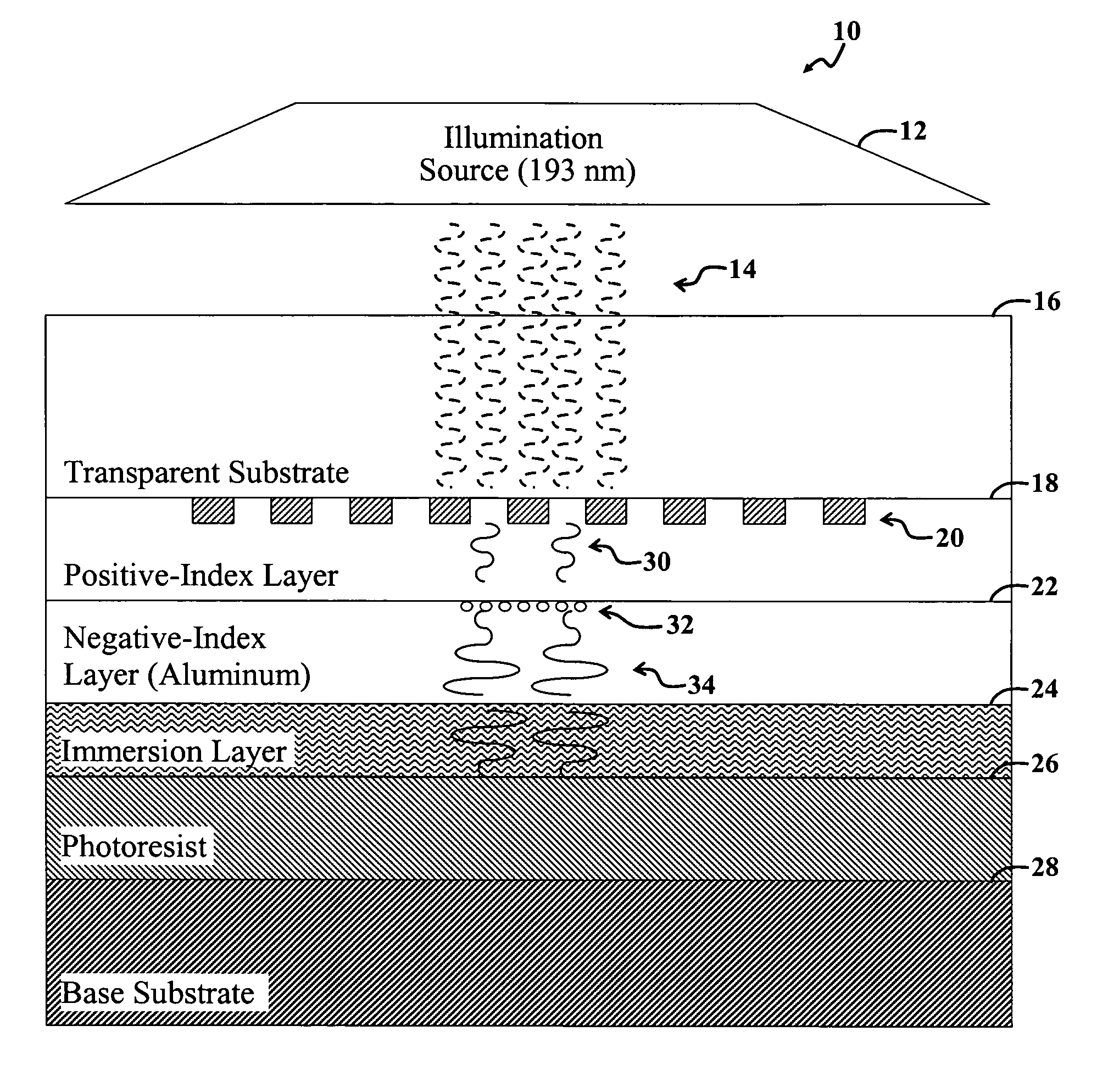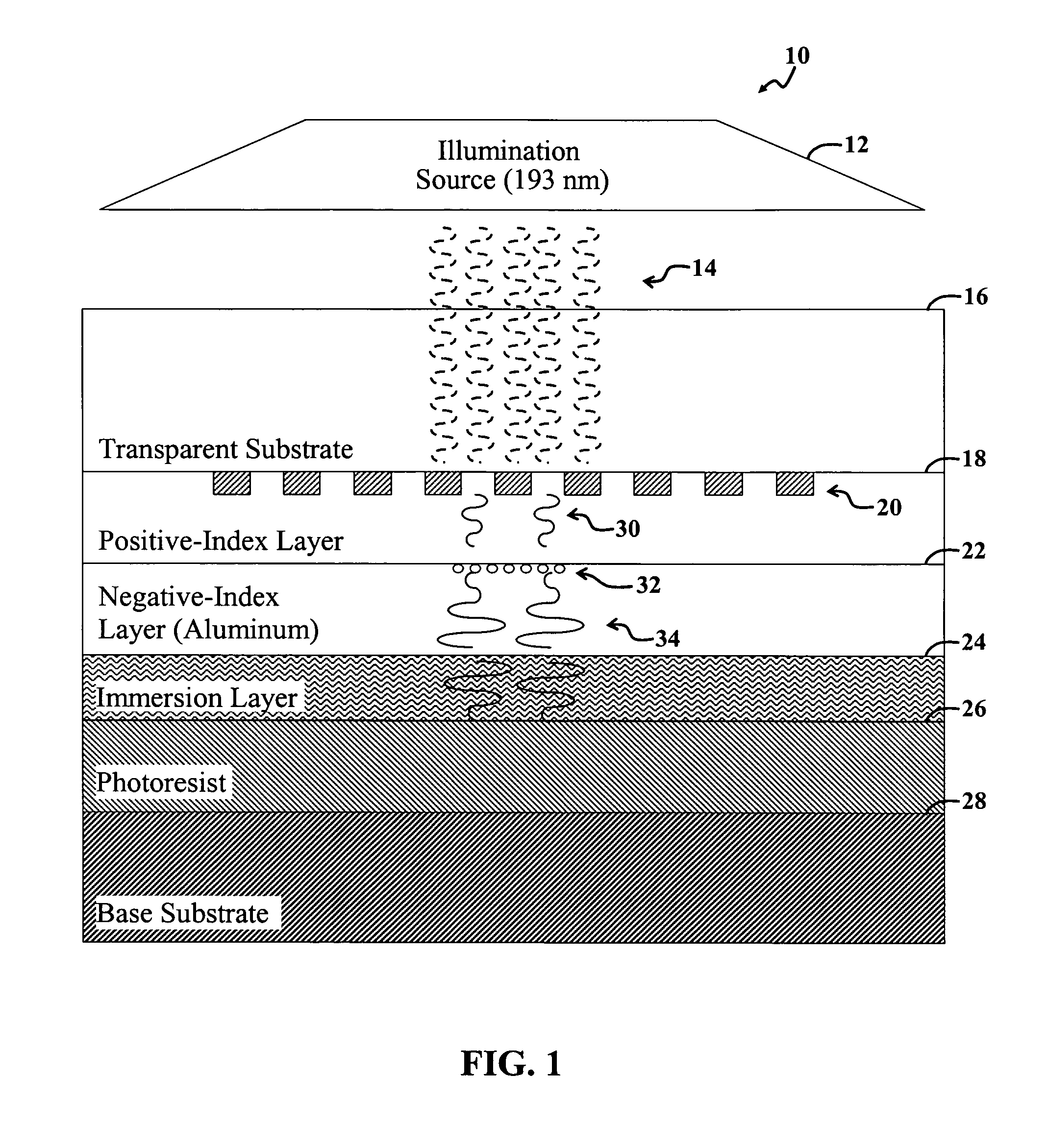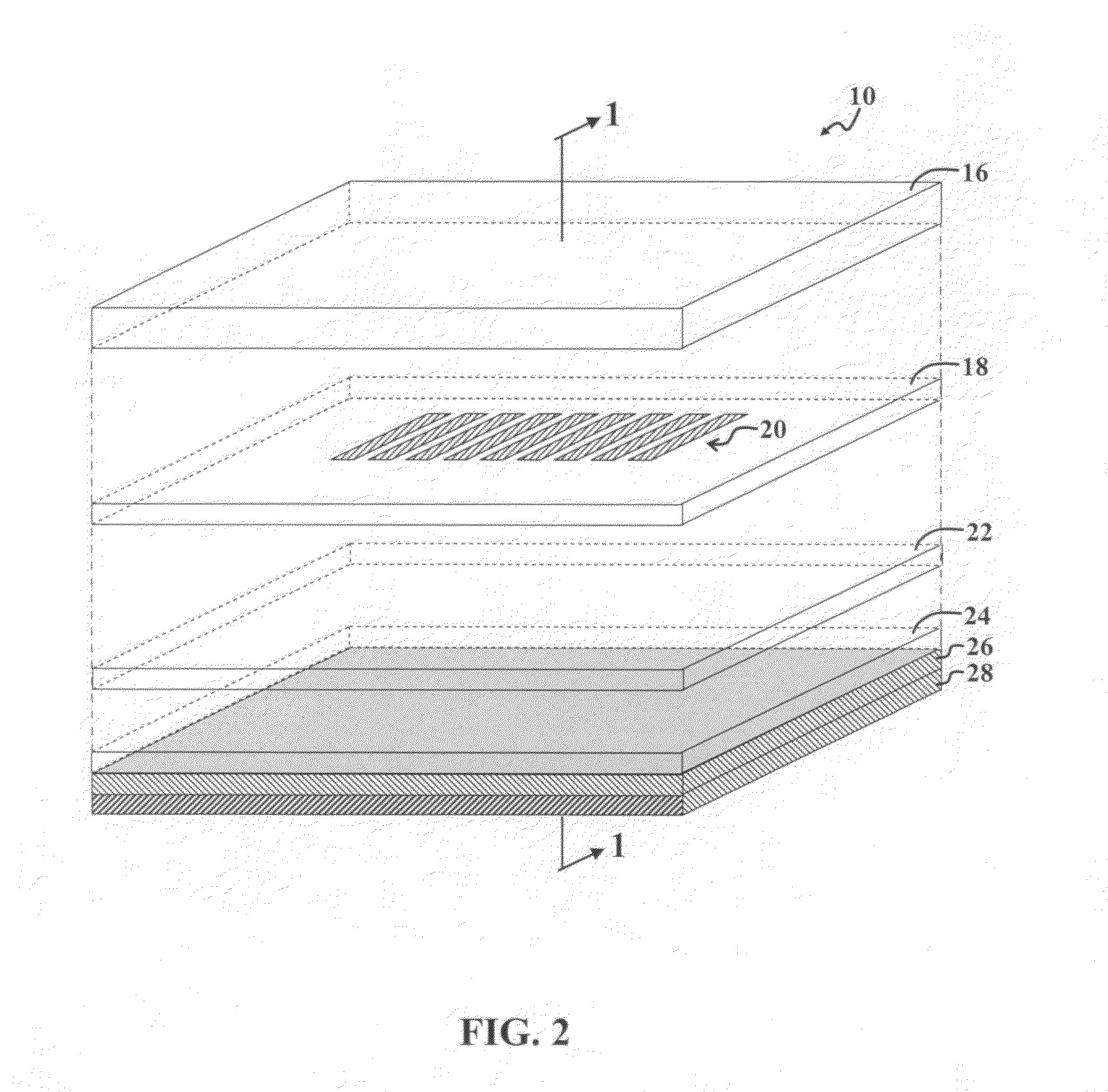Superlens and lithography systems and methods using same
a superlense and lithography technology, applied in the field of plasmonic devices, can solve the problems of large wavelengths, difficult to achieve the effect of improving resolution, improving performance, and improving resolution
- Summary
- Abstract
- Description
- Claims
- Application Information
AI Technical Summary
Benefits of technology
Problems solved by technology
Method used
Image
Examples
first embodiment
[0025]FIG. 1 is a diagram of a nanolithography system 10 for performing immersion lithography. For the purposes of the present discussion, a lithography system may be any device or collection of devices adapted to facilitate using an image or projection of an image, such as a mask pattern or other image, to create one or more physical features in or on a material. A nanolithography system may be any lithography system capable of facilitating the creation of nanometer-scale features. A nanometer-scale feature, also called a nanoscale feature, may be any feature or thing with one or more dimensions less than approximately 500 nanometers.
[0026]The present nanolithography system 10 is also called a superlens lithography system, or more specifically, a single-superlens nanolithography system, as it employs a single superlens to facilitate nanolithography. A superlens may be any lens or device capable of yielding an image characterized by a resolution less than the diffraction limit asso...
second embodiment
[0054]FIG. 3 is a diagram of a single-superlens nanolithography system 40 for performing contact lithography. The construction and operation of the second single-superlens lithography system 40 is similar to the construction and operation of the first super-lens lithography system 10 of FIG. 1 with the exception that the immersion layer 24 of FIG. 1 is removed in FIG. 2, and the mask 20 of FIG. 1 is replaced with a thicker mask 50 that extends into a transparent substrate 56 instead of extending into the positive-index layer 58. Furthermore, the illumination source 12 of FIG. 1 is replaced with the alternative illumination source 42, which is adapted to produce multiple selectively angled beams of collimated electromagnetic energy 46, 48. In the present specific embodiment, the beams 46, 48 are angled approximately forty-five degrees so that they intersect, forming an interference pattern 49. The interference pattern 49 represents a coupling of the beams 46, 48. By strategically co...
third embodiment
[0061]FIG. 4 is a diagram of a multi-superlens nanolithography system 60 for performing immersion lithography. The construction and operation of the multi-superlens nanolithography system 60 is similar to the construction and operation of the first single-superlens nanolithography system 10 of FIG. 1 with the exception that an additional superlens 62, 64 comprising a second positive-index layer 62 adjacent to a second negative-index layer 64 is positioned after the first negative-index layer 22 of the first superlens 18, 22. Furthermore, the mask 20 extends into a transparent substrate 66.
[0062]Evanescent waves output from the first negative-index layer 22 are slightly attenuated in the second positive-index layer 62 before being amplified again via surface plasmon resonance by the second negative-index layer 64. Use of multiple superlens as shown in FIG. 2 may further enhance resolution obtainable by the nanolithography system 60.
[0063]In the present specific embodiment, the secon...
PUM
 Login to View More
Login to View More Abstract
Description
Claims
Application Information
 Login to View More
Login to View More - R&D
- Intellectual Property
- Life Sciences
- Materials
- Tech Scout
- Unparalleled Data Quality
- Higher Quality Content
- 60% Fewer Hallucinations
Browse by: Latest US Patents, China's latest patents, Technical Efficacy Thesaurus, Application Domain, Technology Topic, Popular Technical Reports.
© 2025 PatSnap. All rights reserved.Legal|Privacy policy|Modern Slavery Act Transparency Statement|Sitemap|About US| Contact US: help@patsnap.com



